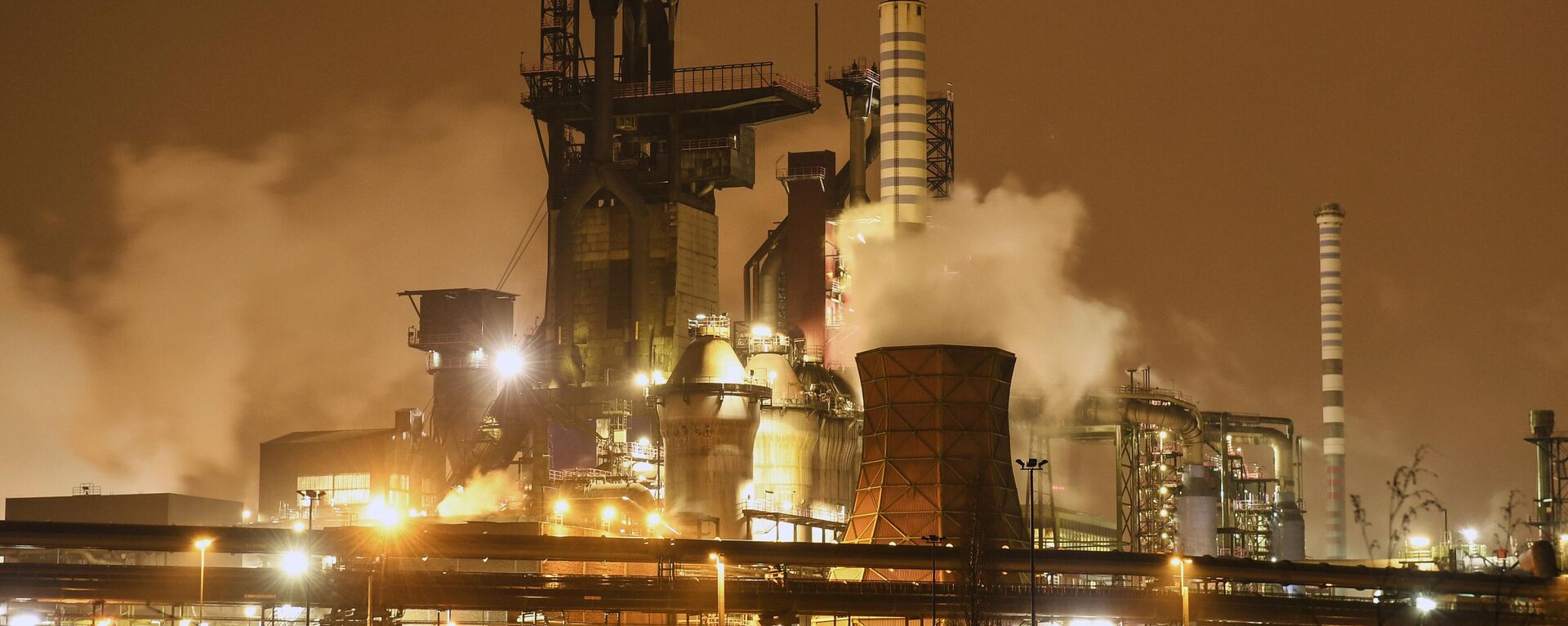https://en.sputniknews.africa/20240423/over-70-of-all-workers-exposed-to-excessive-heat-intl-labor-organization-reveals-1066192778.html
Over 70% of All Workers Exposed to Excessive Heat, Int'l Labor Organization Reveals
Over 70% of All Workers Exposed to Excessive Heat, Int'l Labor Organization Reveals
Sputnik Africa
Maintaining a body temperature of approximately 37°C is essential for normal body function. When body temperature rises above 38°C, physical and cognitive... 23.04.2024, Sputnik Africa
2024-04-23T11:04+0200
2024-04-23T11:04+0200
2024-04-23T11:10+0200
united nations (un)
labor
north africa
west africa
central africa
east africa
southern africa
https://cdn1.img.sputniknews.africa/img/07e8/04/17/1066193528_0:160:3072:1888_1920x0_80_0_0_35cd91b507859bc55e0759dabf62847a.jpg
At least 2.41 billion, or 70%, of workers are overexposed to heat each year, leading to increased mortality and reduced productivity, warned the UN International Labor Organization (ILO) in a new report.The ILO estimated that overheating causes 22.85 million work-related injuries and 18,970 work-related deaths each year.Comparing exposure estimates for 2020 with those for 2000, the organization found that the number of workers exposed to excessive heat grew by 34.7%, an increase attributed to both rising temperatures and a growing workforce.Workers in agriculture, construction, natural resource management and waste collection are at particular risk of injury or death from extreme heat and other outdoor occupational hazards, the report added.Some groups of such workers are even more at risk, such as migrant workers in informal construction and agriculture or emergency workers during extreme weather events such as forest fires, according to the ILO.Apart from that, hundreds of thousands more die annually from pesticide poisoning, air pollution, solar UV radiation and parasitic and vector-borne diseases, the labor agency warned.The regional proportion of the population exposed to solar UV radiation was largest for Africa (33%) and the South-East Asia region (32.3%), and lowest for the Europe region (18.5%).
https://en.sputniknews.africa/20231120/industrialization-day-next-major-global-growth-opportunity-will-come-from-africa-official-says-1063681863.html
north africa
west africa
central africa
east africa
southern africa
Sputnik Africa
feedback@sputniknews.com
+74956456601
MIA „Rossiya Segodnya“
2024
Maxim Grishenkin
https://cdn1.img.sputniknews.africa/img/07e7/0a/17/1063018107_0:0:1104:1103_100x100_80_0_0_03090c85a11f5d2e8a19cf1d989443c9.jpg
Maxim Grishenkin
https://cdn1.img.sputniknews.africa/img/07e7/0a/17/1063018107_0:0:1104:1103_100x100_80_0_0_03090c85a11f5d2e8a19cf1d989443c9.jpg
News
en_EN
Sputnik Africa
feedback@sputniknews.com
+74956456601
MIA „Rossiya Segodnya“
Sputnik Africa
feedback@sputniknews.com
+74956456601
MIA „Rossiya Segodnya“
Maxim Grishenkin
https://cdn1.img.sputniknews.africa/img/07e7/0a/17/1063018107_0:0:1104:1103_100x100_80_0_0_03090c85a11f5d2e8a19cf1d989443c9.jpg
united nations (un), labor, north africa, west africa, central africa, east africa, southern africa
united nations (un), labor, north africa, west africa, central africa, east africa, southern africa
Over 70% of All Workers Exposed to Excessive Heat, Int'l Labor Organization Reveals
11:04 23.04.2024 (Updated: 11:10 23.04.2024) Maintaining a body temperature of approximately 37°C is essential for normal body function. When body temperature rises above 38°C, physical and cognitive functions are impaired, and when it rises above 40.6°C, the risk of organ damage, loss of consciousness, and ultimately death increases dramatically, according to the labor organization.
At least 2.41 billion, or 70%, of workers are overexposed to heat each year, leading to increased mortality and reduced productivity, warned the UN International Labor Organization (ILO) in a
new report.
The ILO estimated that overheating causes 22.85 million work-related injuries and 18,970 work-related deaths each year.
"Workers are among those most exposed to climate change hazards yet frequently have no choice but to continue working, even if conditions are dangerous. Global occupational safety and health protections have struggled to keep up with the evolving risks from climate change, resulting in worker mortality and morbidity," the report said.
Comparing exposure estimates for 2020 with those for 2000, the organization found that the number of workers exposed to excessive heat grew by
34.7%, an increase attributed to both rising temperatures and
a growing workforce.
Workers in agriculture, construction, natural resource management and waste collection are at particular risk of injury or death from extreme heat and other outdoor occupational hazards, the report added.
Some groups of
such workers are even more at risk, such as migrant workers in informal construction and agriculture or emergency workers during extreme weather events such as forest fires, according to the ILO.
Apart from that, hundreds of thousands more die annually from pesticide poisoning, air pollution, solar UV radiation and parasitic and vector-borne diseases, the labor agency warned.
The regional proportion of the population exposed to solar UV radiation was largest for Africa (33%) and the South-East Asia region (32.3%), and lowest for the Europe region (18.5%).



